In the fiercely competitive compact car segment, the Fiat 500 and Suzuki Swift stand out as two popular choices that cater to different preferences. This comparison delves into their technical aspects, innovations, and overall performance to aid potential buyers in making an informed decision between the stylish Fiat 500 and the versatile Suzuki Swift.
Fiat 500 vs Suzuki Swift – Which car suits you better?
Compare performance, boot capacity, efficiency and price at a glance.
Find out which car is the better choice for you – Fiat 500 or Suzuki Swift?
Design and Dimensions
The Fiat 500 has maintained its iconic retro styling, making it a beloved choice for urban drivers. The 2023 and 2024 models come with compact dimensions, measuring 3632mm in length, 1683mm in width, and 1527mm in height. It offers a chic hatchback design that's perfect for city life.
On the other hand, the Suzuki Swift boasts a slightly larger body with a length of 3860mm, a width of 1735mm, and a height ranging between 1485mm to 1510mm, depending on the variant. This allows the Swift to provide a more spacious cabin and trunk, with a trunk capacity of 265 liters compared to the Fiat 500's 185 liters.
Powertrain and Performance
The Fiat 500 is positioned as an electric vehicle, offering two power outputs: 118 HP and a lower variant of 95 HP, backed by a torque of 220 Nm. It utilizes a sophisticated reduction gearbox for automatic transmission, ensuring a smooth driving experience with front-wheel drive. Its electric range is impressive, spanning up to 321 km with a battery capacity of 37.3 kWh, making it a strong contender for eco-conscious drivers.
In contrast, the Suzuki Swift operates with a petrol mild hybrid engine delivering 82 HP and a torque of 112 Nm. This engine is available with either a manual gearbox or a continuously variable transmission (CVT). Furthermore, with a fuel consumption of between 4.4 and 4.9 L/100km, the Swift is positioned to attract those who favor traditional IC engines while still being environmentally aware.
Acceleration and Speed
The Fiat 500 offers a respectable acceleration of 0 to 100 km/h in about 9 to 9.5 seconds, with a top speed capped at 150 km/h. This makes it a versatile option for both city commuting and highway driving.
The Suzuki Swift, however, is slightly more performance-oriented, achieving a top speed of up to 170 km/h, depending on the variant. Its lightweight design, with curb weights between 1069 kg to 1145 kg, enhances agility while delivering a fun driving experience.
Efficiency and Environmental Impact
In terms of efficiency, the Fiat 500 boasts an impressive CO2 emission rating of 0 g/km, solidifying its status as an eco-friendly vehicle. With an efficiency class of A, it's designed for those who want to minimize their carbon footprint.
The Suzuki Swift, with a CO2 emission range of 98 to 110 g/km, falls under a C efficiency class. While not as environmentally friendly as the Fiat, it still offers commendable fuel savings and meets emissions standards effectively.
Interior Comfort and Features
Inside, the Fiat 500 provides a cozy environment for up to four passengers, maintaining a fashionable interior with modern technological integration. Expect a well-appointed cabin with available features such as touchscreen infotainment and advanced safety systems.
Conversely, the Suzuki Swift can accommodate five passengers comfortably, showcasing a more practical design. The Swift often comes with a variety of tech features as well, providing a good mix of comfort and functionality ideal for families or those who regularly carry passengers.
Conclusion: Choosing Your Ideal Hatchback
In summary, both the Fiat 500 and Suzuki Swift represent distinct philosophies in the compact car market. The Fiat 500 shines as a stylish electric option catering to eco-conscious drivers, while the Suzuki Swift appeals to those seeking a versatile and dynamic petrol-powered car. Your ultimate choice will likely hinge on personal preferences, driving habits, and environmental considerations.
Here’s where it gets real: The technical differences in detail
Costs and Efficiency:
Price and efficiency are key factors when choosing a car – and this is often where the real differences emerge.
Suzuki Swift has a minimal advantage in terms of price – it starts at 17100 £, while the Fiat 500 costs 18800 £. That’s a price difference of around 1706 £.
Fuel consumption also shows a difference: Suzuki Swift manages with 4.40 L and is therefore noticeable more efficient than the Fiat 500 with 5.30 L. The difference is about 0.90 L per 100 km.
Engine and Performance:
Power, torque and acceleration are the classic benchmarks for car enthusiasts – and here, some clear differences start to show.
When it comes to engine power, the Fiat 500 has a noticeable edge – offering 118 HP compared to 82 HP. That’s roughly 36 HP more horsepower.
In terms of top speed, the Suzuki Swift performs slight better – reaching 170 km/h, while the Fiat 500 tops out at 155 km/h. The difference is around 15 km/h.
There’s also a difference in torque: Fiat 500 pulls significantly stronger with 220 Nm compared to 112 Nm. That’s about 108 Nm difference.
Space and Everyday Use:
Whether family car or daily driver – which one offers more room, flexibility and comfort?
Seats: Suzuki Swift offers a bit more seating capacity – 5 vs 4.
In curb weight, Suzuki Swift is barely noticeable lighter – 1069 kg compared to 1141 kg. The difference is around 72 kg.
In terms of boot space, the Suzuki Swift offers distinct more room – 265 L compared to 185 L. That’s a difference of about 80 L.
In maximum load capacity, the Suzuki Swift performs significantly better – up to 980 L, which is about 430 L more than the Fiat 500.
When it comes to payload, Fiat 500 hardly perceptible takes the win – 325 kg compared to 296 kg. That’s a difference of about 29 kg.
Who wins the race?
The Suzuki Swift proves to be shows small but notable strengths and therefore becomes our DriveDuel Champion!
Suzuki Swift is the better all-rounder in this comparison.
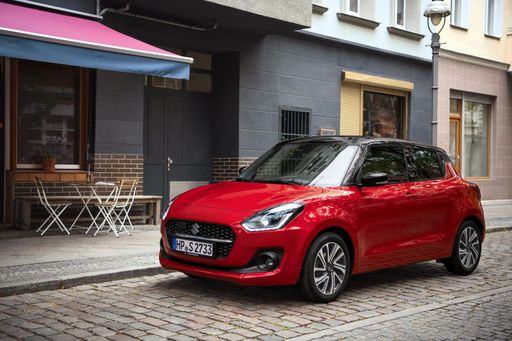 @ Suzuki Motor Corporation
@ Suzuki Motor Corporation
Suzuki Swift
Fiat 500
The Fiat 500 is a compact and stylish city car that has captured the hearts of urban drivers with its charming retro design. Its nimble handling and efficient engine make navigating tight city streets a breeze, while its cosy interior offers a surprising amount of comfort and modern technology. The car's iconic silhouette and vibrant colour options ensure it stands out, offering a unique blend of timeless appeal and contemporary flair.
details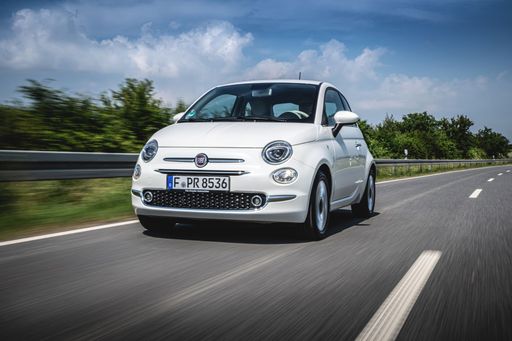 @ Fiat / Stellantis Media
@ Fiat / Stellantis Media
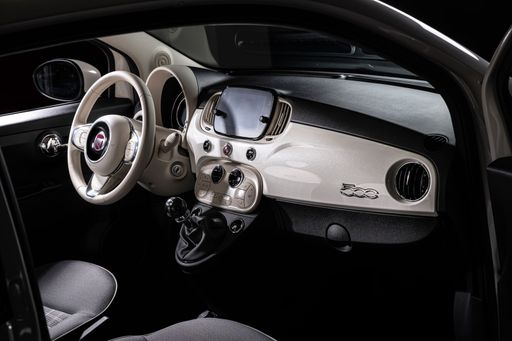 @ Fiat / Stellantis Media
@ Fiat / Stellantis Media
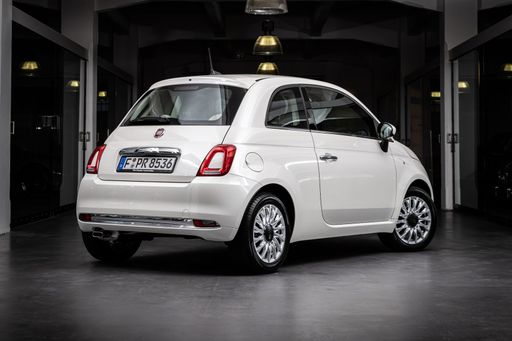 @ Fiat / Stellantis Media
@ Fiat / Stellantis Media
Suzuki Swift
The Suzuki Swift is a cheeky little hatch that turns city streets into its playground with lively handling and a grin-inducing drive. Practical enough for daily chores, thrifty to run and kinder on your wallet than many rivals, it's a sensible pick for buyers who want fun without drama.
details @ Suzuki Motor Corporation
@ Suzuki Motor Corporation
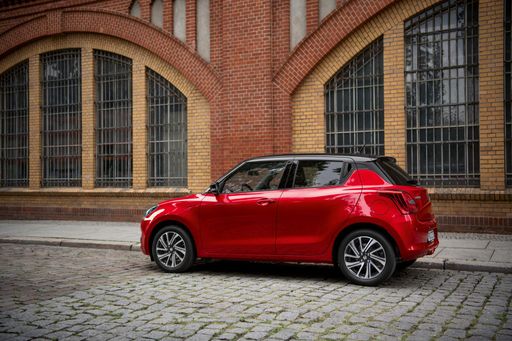 @ Suzuki Motor Corporation
@ Suzuki Motor Corporation
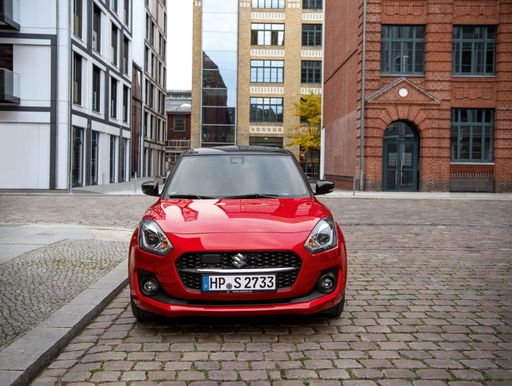 @ Suzuki Motor Corporation
@ Suzuki Motor Corporation
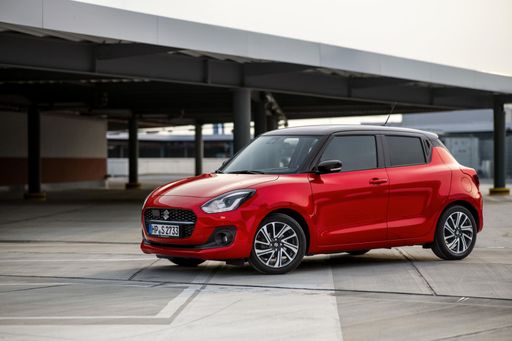 @ Suzuki Motor Corporation
@ Suzuki Motor Corporation
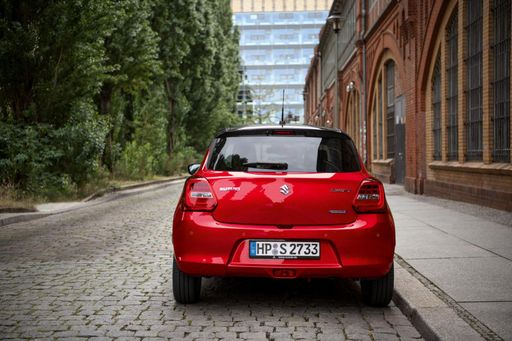 @ Suzuki Motor Corporation
@ Suzuki Motor Corporation
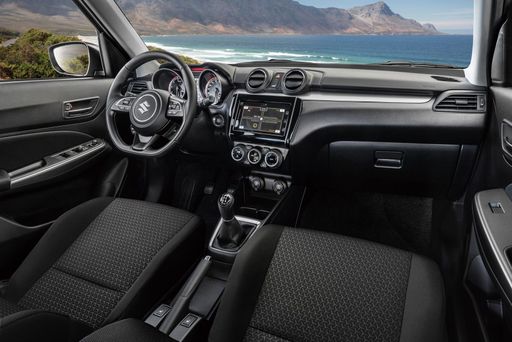 @ Suzuki Motor Corporation
@ Suzuki Motor Corporation
 @ Fiat / Stellantis Media
@ Fiat / Stellantis Media
|
 @ Suzuki Motor Corporation
@ Suzuki Motor Corporation
|
|
|
|
Costs and Consumption |
|
|---|---|
|
Price
18800 - 30800 £
|
Price
17100 - 21200 £
|
|
Consumption L/100km
5.30 L
|
Consumption L/100km
4.4 - 4.9 L
|
|
Consumption kWh/100km
13 - 14.7 kWh
|
Consumption kWh/100km
-
|
|
Electric Range
190 - 331 km
|
Electric Range
-
|
|
Battery Capacity
21.3 - 37.3 kWh
|
Battery Capacity
-
|
|
co2
0 - 120 g/km
|
co2
98 - 110 g/km
|
|
Fuel tank capacity
-
|
Fuel tank capacity
37 L
|
Dimensions and Body |
|
|---|---|
|
Body Type
Hatchback
|
Body Type
Hatchback
|
|
Seats
4
|
Seats
5
|
|
Doors
3 - 4
|
Doors
5
|
|
Curb weight
1141 - 1475 kg
|
Curb weight
1069 - 1145 kg
|
|
Trunk capacity
183 - 185 L
|
Trunk capacity
265 L
|
|
Length
3631 - 3632 mm
|
Length
3860 mm
|
|
Width
1683 - 1684 mm
|
Width
1735 mm
|
|
Height
1527 - 1532 mm
|
Height
1485 - 1510 mm
|
|
Max trunk capacity
440 - 550 L
|
Max trunk capacity
980 L
|
|
Payload
250 - 325 kg
|
Payload
282 - 296 kg
|
Engine and Performance |
|
|---|---|
|
Engine Type
Electric, Petrol MHEV
|
Engine Type
Petrol MHEV
|
|
Transmission
Automatic, Manuel
|
Transmission
Manuel, Automatic
|
|
Transmission Detail
Reduction Gearbox, Manual Gearbox
|
Transmission Detail
Manual Gearbox, CVT
|
|
Drive Type
Front-Wheel Drive
|
Drive Type
Front-Wheel Drive, All-Wheel Drive
|
|
Power HP
65 - 118 HP
|
Power HP
82 HP
|
|
Acceleration 0-100km/h
9 - 16.2 s
|
Acceleration 0-100km/h
-
|
|
Max Speed
135 - 155 km/h
|
Max Speed
160 - 170 km/h
|
|
Torque
220 Nm
|
Torque
112 Nm
|
|
Number of Cylinders
3
|
Number of Cylinders
3
|
|
Power kW
48 - 87 kW
|
Power kW
61 kW
|
|
Engine capacity
999 cm3
|
Engine capacity
1197 cm3
|
General |
|
|---|---|
|
Model Year
2023 - 2025
|
Model Year
2024
|
|
CO2 Efficiency Class
A, D
|
CO2 Efficiency Class
C
|
|
Brand
Fiat
|
Brand
Suzuki
|
What drivetrain options does the Fiat 500 have?
The Fiat 500 is offered with Front-Wheel Drive.
The prices and data displayed are estimates based on German list prices and may vary by country. This information is not legally binding.
